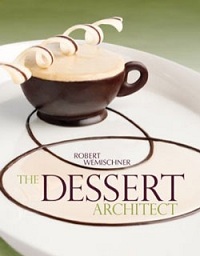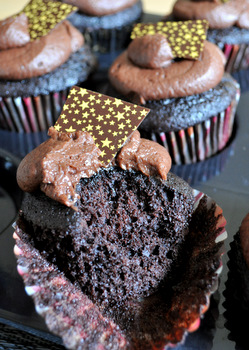 Fancy, plated desserts aren’t a regular after dinner item for most home cooks and bakers. When we bake at home, most of the time we are looking for comfort food dishes that will be easy to make and satisfying, or large enough to serve to a crowd. Restaurant-style plated desserts still may not be your dessert of choice for a group of rowdy, hungry kids, but even elaborate desserts can be made at home and learning to make them can take your pastry skills to a whole new level. In The Dessert Architect, Chef Robert Wemischner teaches you the fundamentals of putting together plated desserts and walks you through the techniques needed to make these impressive looking dishes on your own.
Fancy, plated desserts aren’t a regular after dinner item for most home cooks and bakers. When we bake at home, most of the time we are looking for comfort food dishes that will be easy to make and satisfying, or large enough to serve to a crowd. Restaurant-style plated desserts still may not be your dessert of choice for a group of rowdy, hungry kids, but even elaborate desserts can be made at home and learning to make them can take your pastry skills to a whole new level. In The Dessert Architect, Chef Robert Wemischner teaches you the fundamentals of putting together plated desserts and walks you through the techniques needed to make these impressive looking dishes on your own.
Plated desserts typically have several components on each plate, so they require a little bit more planning than simpler desserts. The whole books is geared towards teaching you how to plan these desserts, from idea to finished dish. The book opens by discussing the “four cornerstones” of dessert – flavor, texture, temperature and contrast – and how these elements need to be considered when coming up with flavorful desserts. There are some fantastic charts that describe not only ingredients, but classify them by flavor (whether they’re subtle, loud or “kick in” after a few bites) and how they work together. The book then moves on into a discussion of ingredients and equipment before moving into the recipes.
The recipes in this book can stand alone, but they’re really designed to showcase all the techniques that you might use in plating desserts. Every dessert has several components, including sauces and garnishes. It can be time consuming to create each element of a dish, but the book walks you through even complex techniques very carefully so that every dessert is achievable with just a little bit of patience. There are full color photos of every finished dessert and step-by-step photos of some of the more complicated techniques called for. The recipes are given in ounces and grams, not by volume, so you will need to work with a good kitchen scale to get your desserts just right. By the end, you’ll not only know how to make beautiful restaurant-worthy desserts, but you’ll also have tried several recipes that can stand alone (ice creams, cookies, tuiles, chocolates, homemade marshmallows, etc.) that you can make again and again as stand-alone treats, too.






Maureen
February 20, 2012This sounds like a fantastic book that could move my style ahead by about a mile 🙂